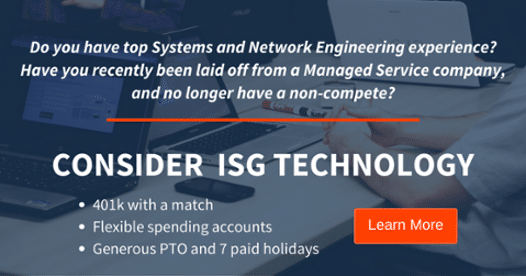The culture you have created at your business should be something you are constantly evaluating. Not only does it affect employee retention and recruiting, it also has major repercussions when attempting to implement a hybrid IT solution. Blending your own IT team’s services with that of an outside provider is never a completely smooth process, but having a poor internal culture can make it even bumpier than it has to be.
That said, culture does not exactly have a quantifiable metric, so deciding whether or not your employees are ready for this kind of service can be difficult. What does an office that is prepared for hybrid IT integration look like, and what can you do to get your workers to that position? Let’s find out:
“IT departments have become overwhelmed.”
Your IT team hasn’t failed
A good place to start with a hybrid IT integration is to make sure everyone understands that your internal IT department is not at fault here. Many employees jump to the conclusion that contracting a managed service provider to handle certain functions is the first step toward fully outsourcing IT. As an administrator, it is your job to quell these notions.
With the massive increase in technological reliance in recent years, IT departments have become overwhelmed. In fact, Robert Half Technology found in a study that CIOs believed their tech teams to be understaffed by about 42 percent. Explaining that this integration of hybrid IT is to allow your internal department to focus on future goals rather than putting out daily fires can help quell any panic from employees.
Emphasize innovation from the top
Another reason employees are hesitant about hybrid IT is the fact that they probably have gotten used to the old way of doing things. In fact, getting employees out of a rut is actually one of the best benefits of this service. Shaking things up from time to time helps fight complacency, but it has to come from the top of your organization. This means getting all executives on board and actively engaged in this transition.
If not, you could become part of the roughly 90 percent of respondents in a recent Hitachi Consulting report that stated legacy systems were getting in the way of innovation and growth. Innovation should be a major part of any company’s business model, and hybrid IT can help you work toward it.
 Hybrid IT can help with innovation.
Hybrid IT can help with innovation.Be specific with what will need to happen
Finally, and perhaps most importantly, administrators need to keep employees as informed as possible about this transition. This starts by being specific about what operations will have to be moved when discussing the integration with your current IT team. Just saying “we need to move to the cloud” is not good enough.
On top of that, you’re going to need to be extremely transparent with the rest of your employees. Backlash from workers is very common in these situations, and the only way to minimize this is to make sure everyone knows what’s going on and why these operations are changing.
Hybrid IT is certainly a deviation from the norm, but that’s the whole point. Change is a good thing if handled correctly, so make sure you choose a solid managed service provider to get the job done right. ISG Technology’s years of experience integrating hybrid IT can help make sure your transition is as pain free as possible.

